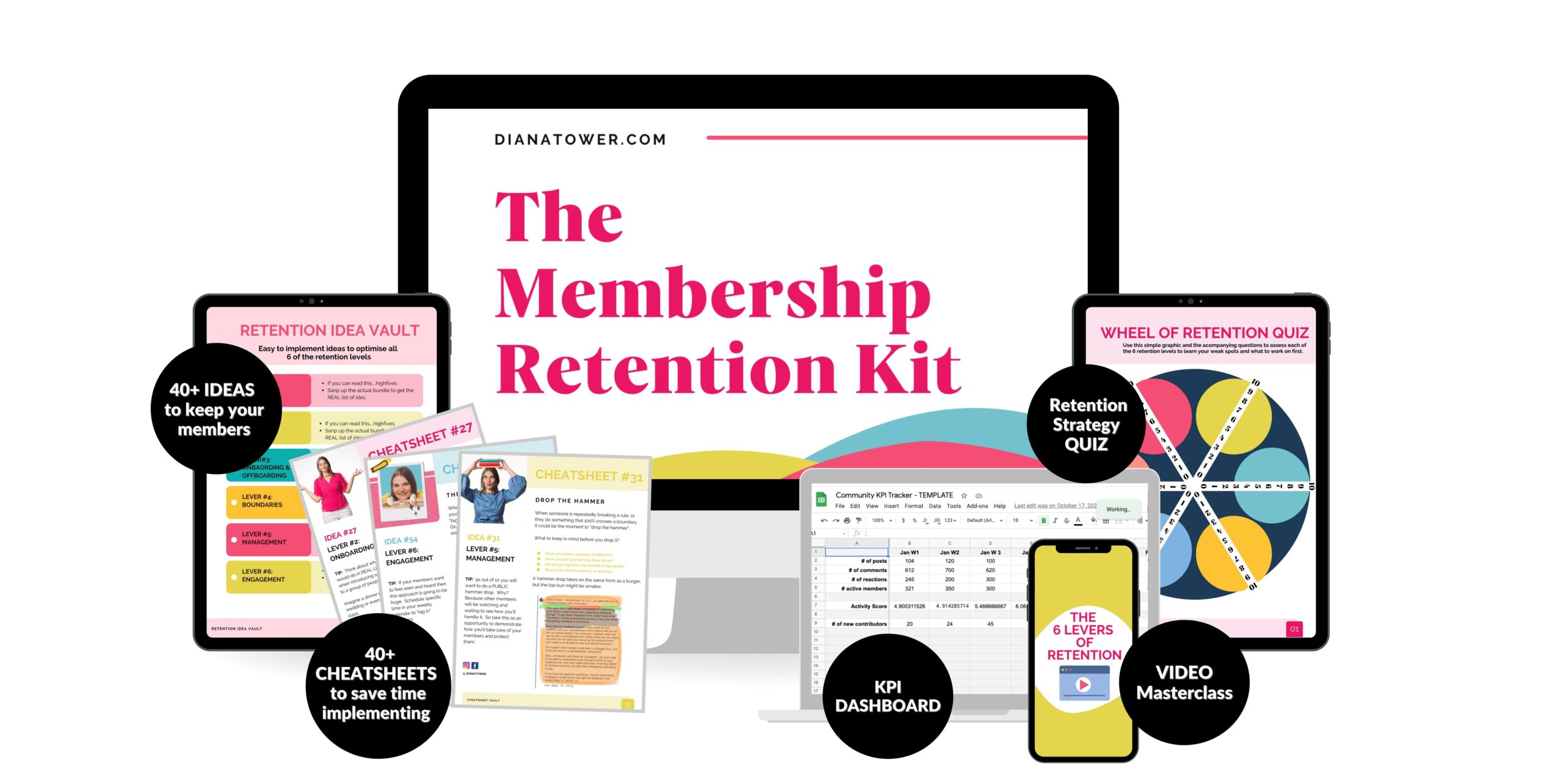Chapter 7 —
What’s YOUR role as the host in your community?
You might be wondering, now that you’re getting everything set up, what exactly is your role as the host of your community? What expectations should you have and what should your students expect of you?
Asking yourself these questions NOW will help you set the right expectations and avoid becoming the raccoon on crack that everyone thinks is required to run a community.
How active SHOULD you be in your group?
This is a great question, and I know you’re probably thinking more in terms of your time than anything else. In my previous guide we discuss how to set the right expectations in terms of the time you’ll be spending in your group.
Check it out here if you haven’t already. Don’t worry. I’ll wait here.
Done? Great.
Once you’ve got that number in mind, and a schedule actually mapped out for you (yes…put this into your Google calendar). You also need to ask yourself about response time.
Why waiting can actually boost engagement.
This might come as a shock to you, but you should NOT reply as quickly as possible when someone posts in your community. Yup…let that sink in for a moment. I am giving you permission to allow some space and time between replying or answering questions.
This also means that you’re allowed to wake up in the morning without whipping out your phone to check your community before you even roll over and kiss your loved one and wait for it…wait for it…you’re 100% allowed to take weekends off.
Why in the name of swiss cheese would I encourage you to back off and NOT jump right in?
Well, it all hinges on the point of having a community.
Let’s play multiple choice shall we. Finish the following sentence…
The point of a community is to create a safe space for your audience to…
A) Gain direct access to you and your brain 24/7.
B) Connect with like minded people on any given topic.
It’s B bitches. A isn’t a community. A is a premium product or coaching program which requires making it rain mucho dolla’bills.
Knowing that it’s B, you’ll realize that if you jump in all the time…you’re actually cock blocking connection in your community. That’s right. It’s like you’re trying to set up your two friends but you keep jumping in and finishing their sentences.
They are all close and cuddly on the couch kicking off a conversation and then you pop your head in between them to offer more wine.
Stop it! You’re killing the mood dude!
Remember what I was doing in the Accelerator welcome thread?
Originally I would reply to those videos as well…welcoming them in and commenting on their video, but I noticed that I was the only mofo commenting. When I implemented my full Community Strategy (that I created using FeverBee’s Strategic Community Management course) I saw that the time and effort I was using to comment on the welcome thread wasn’t the best use of my time…so I stopped.
Remember what happened when I did?
New students started commenting and connecting with each other! It was amazing. Instead of only getting one welcome comment from me, new students now get on average 4 comments from other students.
So remember, it’s not your job to be “on it” all the time. It’s your job to facilitate connections between your members.
Why your role will never include nagging your peeps into participating.
This is an interesting point that I wanted to cover as well. Some of you might be thinking that you’ll need to encourage engagement by nagging people and this all depends on your definition of nagging people.
I have been known to call students out if they do a drive by “like” when I’ve asked for specific feedback on a thread, and I’ll also invite students to participate if I believe they have something useful to share, “Hey Amanda, what's your two cents on this?”, but I’m not going to flog a dead horse. If someone does not want to participate or engage, you can’t make them.
Look at it this way, it’s your job to create windows of opportunity. Someone might not feel comfortable diving in, but you show them that the water is fine. You can do this by tagging them on a post and asking them what they think, encouraging them to give more context or information when they do participate or you can reward them for their interactions by triggering an emotion that they value (pride, connection, helpful etc).
Keep Reading...




